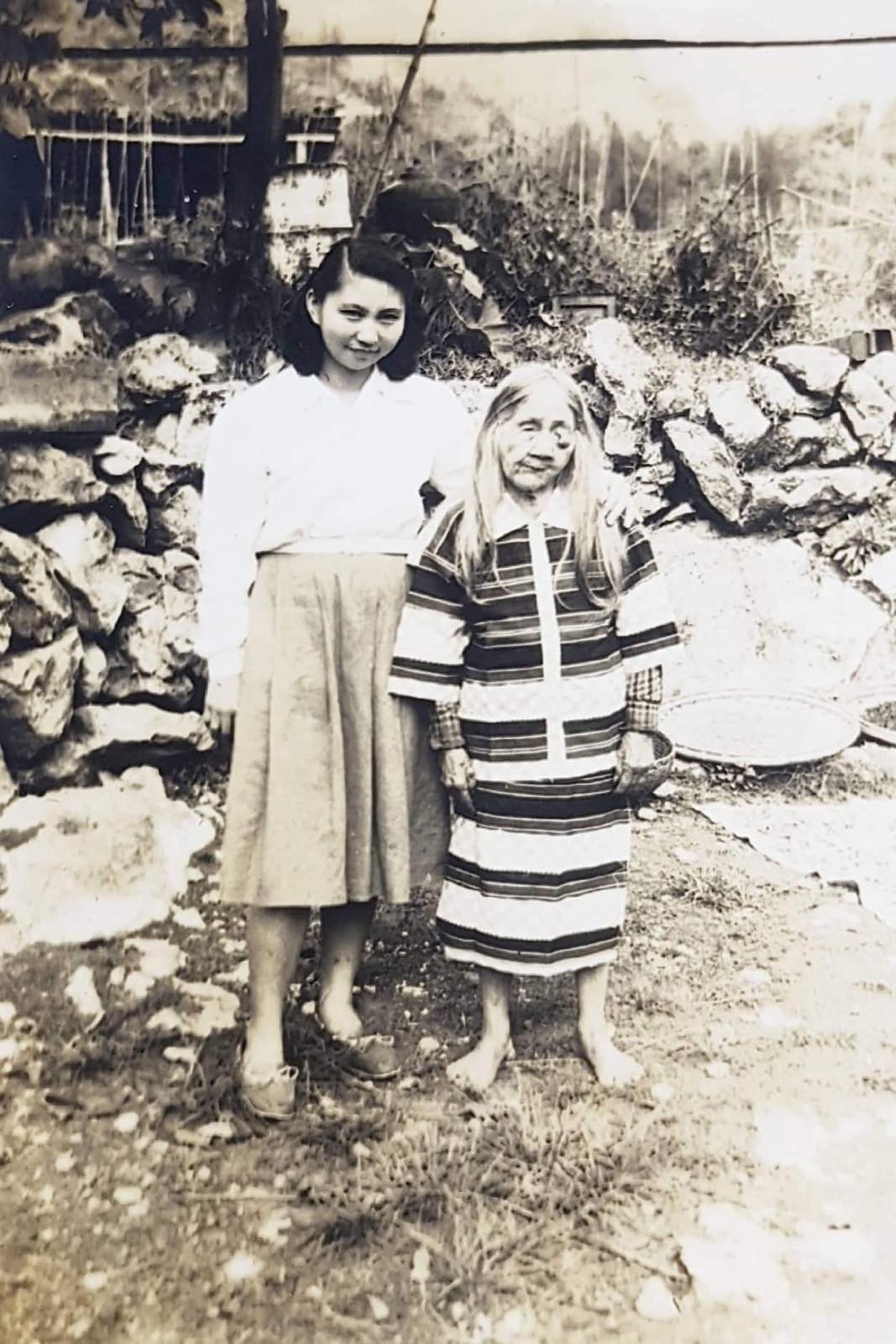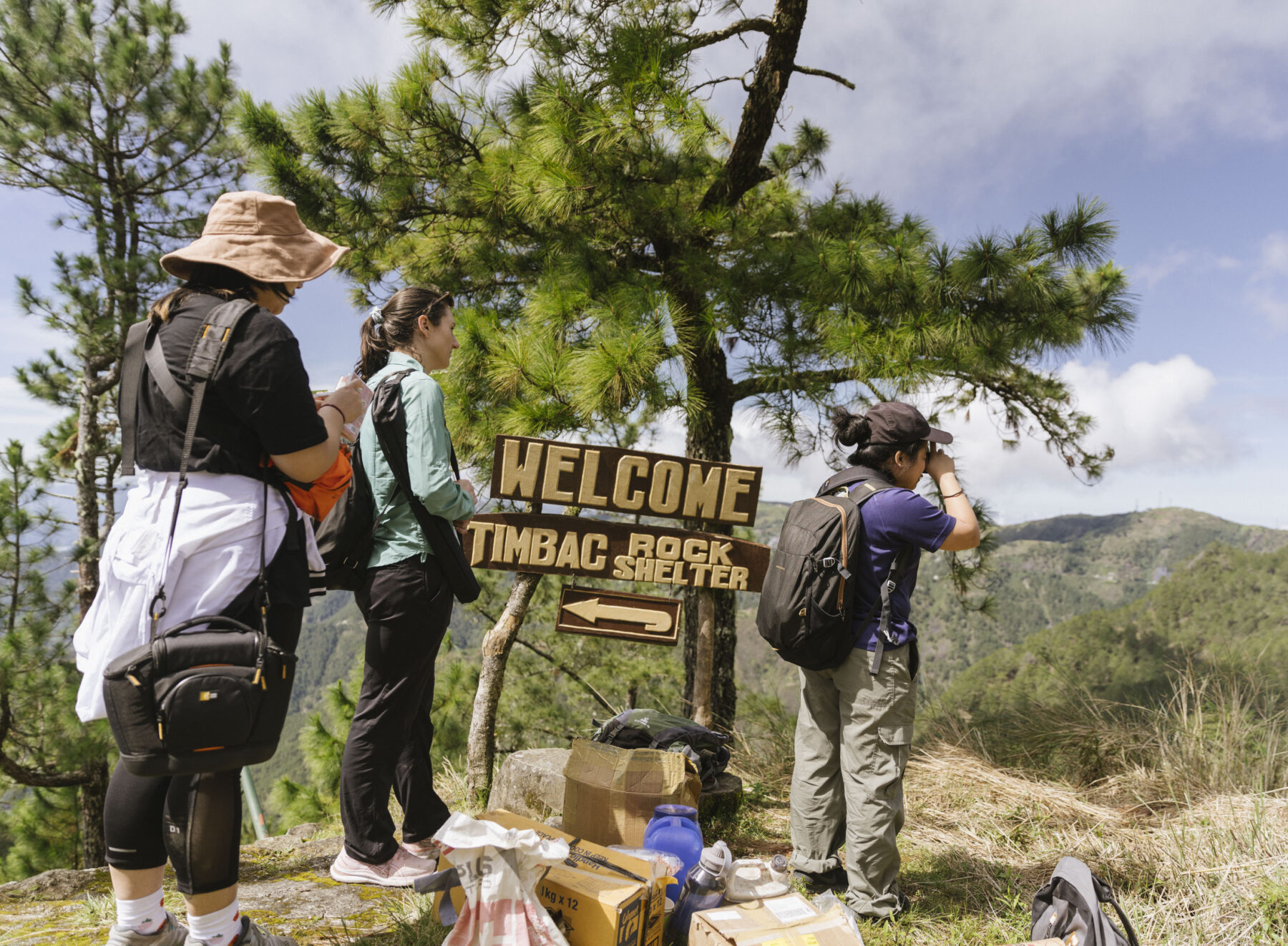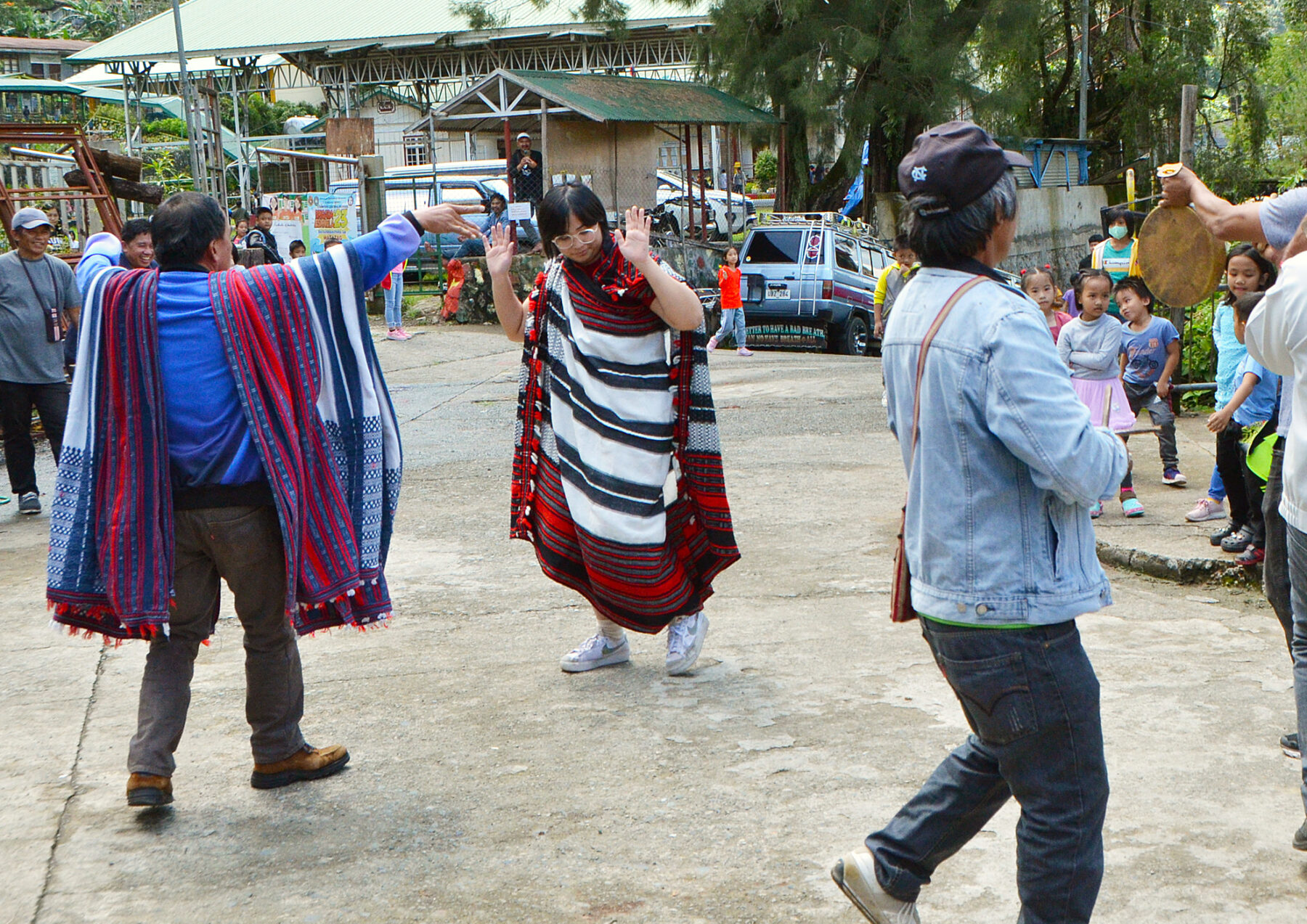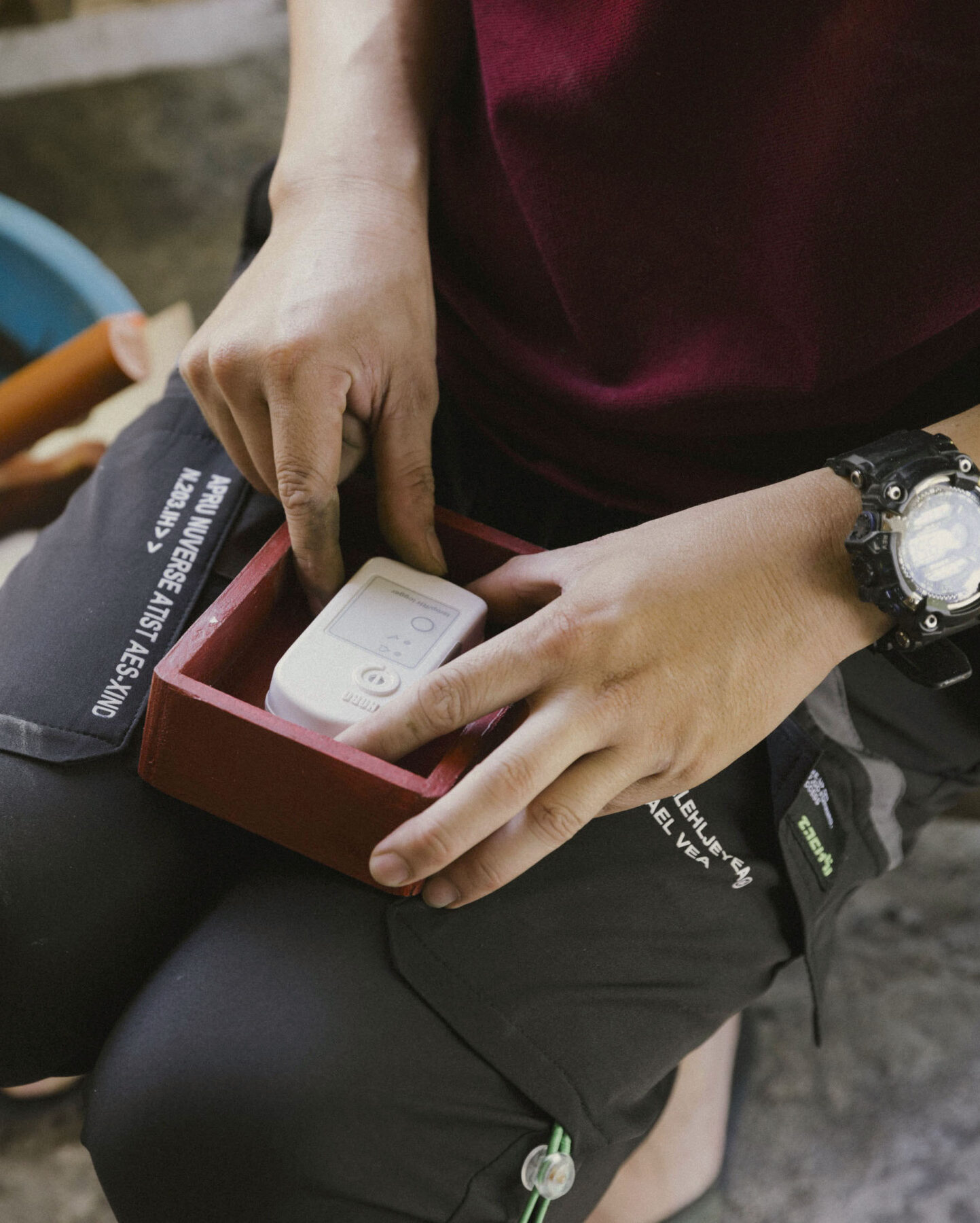Conserving the Kabayan mummies: from an Australian classroom to the Philippines mountains

In September 2023, Fen Reyes, Camille Calanno and Sarah Soltis touched down in Manila with a difficult challenge ahead. They were in the Philippines to make a request and weren’t expecting it to be accepted without hesitation.
The trio from the University of Melbourne’s Grimwade Centre for Cultural Materials Conservation were heading to the municipality of Kabayan, Benguet to meet with local community members to request access to the area’s ancient rock shelters.
Tucked away within these secluded shelters are ‘meking’ or ‘fire mummies’ – the preserved ancestors of the Ibaloi people, one of the distinct ethnolinguistic groups of the mountainous Cordillera Benguet region.
Coming together
Fen, Camille and Sarah first met while studying the Master of Cultural Materials Conservation program at the University of Melbourne. In their shared class, Respect, the trio partnered to write a mock grant proposal.

They decided to investigate the Kabayan mummies – a topic especially close to home for Fen, an Ibaloi descendant.
“Growing up, I was very aware of my great-grandmother and her identity as an Ibaloi woman,” Fen says. “When she passed in 2021, I was starting this course and wanted to connect to her and her heritage.
“That led to this research pathway and learning about the mummies and my cultural heritage. As I was learning more, my grandmother flagged that we had somebody in our family within living memory who was, they say, ‘half-mummified’.
“They began the [mummification] process on her for a few weeks, but her children, who were Catholic, stopped the process and gave her a traditional burial. Her name was Kong, and she passed away in the 1920s.”
Camille also had a close connection with the project. Working on projects related to the mummies for several years, her expertise offered a unique insight. This led Fen, Camille and Sarah to learn about the mummies’ current deterioration and write their mock grant proposal on potential research into how they could work with the Kabayan community to conserve them.
However, the grant proposal didn’t stay in the classroom: “We realised we had this completed grant proposal with all the structural components,” Fen says. “We’ve got the budget, we’ve got the aims, we’ve got the significance; why don’t we actually submit it and see what happens?
“It was October when we submitted the grant, and we sort of forgot about it, especially with the holiday period. Then, in March of the next year, we got an email saying the grant was approved.”
The making of ‘meking’
Most of the secrets of the Kabayan mummification process have been lost over time. The methodology was passed down solely through oral storytelling and anecdotes dating back to as early as 200 BCE.
According to Fen, the process involved drying and dehydrating human remains using heat and smoke from a fire – hence the term ‘fire mummy’.
“The actual process of mummification would take several weeks to do, and they would sit the body by a fire and have the chemical aspects of the smoke and heat dry it out over time,” Fen says. “Once that was done, they would enter the body into a wooden coffin, and that would be placed in a rock shelter or cave in the mountainside.
“If successful, the mummification was so effective it preserved tattoos and hair still visible today.”
Preserving an ancient people
While many of the rock shelters that house these ancient remains have been forgotten or remain purposefully hidden, around ten Kabayan sites are well known.
For hundreds of years, the cooler climate of the mountains helped preserve these mummies, but due to progressive environmental changes, the mummies are slowly deteriorating.
According to Sarah, the deterioration of the Kabayan mummies started increasing significantly in the 1970s due to climate change, growing industrialisation and a rise in tourism in the area.
These factors have led to environmental changes within the burial caves, causing the skin of some mummies to become brittle, and enabling mould growth and insect activity.
“Our project decided to use technology to monitor the environments that the mummies reside in and assess and monitor the agents of deterioration so that we can better understand why they are deteriorating,” Sarah says.

“We hope that by getting a better understanding of the temperature and the relative humidities of the rock shelters in which the mummies are housed, we can then figure out what we need to do so we can conserve the mummies and so they can remain in situ.”
To do this monitoring, Fen, Camille and Sarah would need to install data loggers in the caves where the mummies reside, which required permission from the locals.
“We wanted to make sure everything we were doing was going to be approved by the community and that we didn’t do anything that they would be even slightly uncomfortable with,” Sarah says.
“It was completely up to them whether or not they wanted us to come in and do this project. Even though it would be helping conserve like their ancestors, it was completely up to them whether they wanted outsiders to participate in the conservation.”
Fen adds that it was stressful making the long journey without knowing whether they would be allowed to conduct their research.
“It was a little bit scary having to face these Elders who are wary, and rightfully so,” she says. “There’s been a history of bad experiences with other research teams that have come to that community, so I think it was essential for us to make a good impression and to do right by them.
“At the end of our time in the community, there was a physical show of hands, like, stand up if you agree with the project,” Fen says. “It was almost like a moment from a movie – all the Elders stood up. It was unanimously agreed upon in terms of support.”
Connecting with culture
Fen, Camille and Sarah got to know the Kabayan locals and learned about their culture first-hand to ensure they showed respect to the ancestors whenever they conducted their research.
When meeting with the community, the team joined a Kabayan tradition known as ‘Cañao’, in which they danced and offered a pig to ask the gods for permission to do their research and as a blessing.
They also needed to be respectful of the mummies whenever they entered the caves.


“It’s really important to be respectful of the ancestors and the spirits of the mummies that are housed within the rock shelters, and before you can enter or even look into one of the rock shelters, you’re supposed to explain exactly what you’re going to be doing and then ask for permission,” Sarah explains.
The team would say hello and introduce themselves, explain what they were doing and why, and apologise for disturbing their rest. They would work with local spiritual guides to make offerings to the ancestors, providing them with items such as cigarettes, tobacco and gin.
The team believes the most essential part of their project was respecting and understanding the Kabayan culture so they could equip them with new skills and knowledge to continue caring for their ancestors.
Finding answers
The team partnered with the National Museum of the Philippines to continue the research and has now installed data monitors in seven separate sites.

These data loggers are specifically designed for outdoor temperature and environmental readings.
They will provide data on temperature and humidity at 30-minute intervals for ten months, allowing the team to understand the environment and recognise how it changes over seasons and times.
The loggers have Bluetooth functionality, so the caves don’t need to be disturbed to collect data. Each month, a team member in the Philippines visits the cave sites and downloads the data by remotely connecting to the loggers from within a 30m radius before sending the information back to Melbourne.
Fen says that this data will allow the team to best predict how environmental changes are impacting the mummies and provide insight on how to find practical solutions for their care and preservation in the future.
“At this point, it’s a bit too early to say exactly what those conservation actions will be, but we know that this information will provide a really good basis for us to start to understand why the mummies are deteriorating.”




